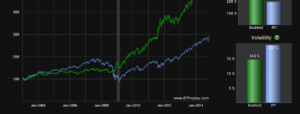Probably one of the more surprising events from what’s been a rather climactic 2017 has been the strength seen in the Euro-Zone. As we came into the year, the ECB had just extended their QE program, and many shops were calling for parity on EUR/USD. Given that the U.S. Dollar was surging up to fresh 14-year highs and also taken with the fact that the ECB remained extremely passive and dovish while a considerable amount of political risk was on the horizon, this stance could be justified. But, as we moved deeper into the year, those factors of resistance began to recede: The U.S. Dollar pulled back and then spent much of the first nine months of 2017 moving-lower; and those elections in Europe appeared to resolve in a rather market friendly manner, starting with the first round of French elections in April.
As each of these factors was falling into place for Euro bulls, the single currency just kept marching higher. This was driven by the prospect of the ECB finally starting to step back from their outsized stimulus purchases, and this is similar to what was seen in 2014 in the U.S. Dollar when markets bid the currency-higher well ahead of the widely-telegraphed move of tightening.
As we moved deeper into the year, those expectations for stimulus exit continued to grow with EUR/USD eventually testing the 1.2000 psychological level. But after getting there, the pair ranged with well-defined support around the 1.1700 handle as we neared the October ECB rate decision. When the bank kicked the can on stimulus exit, the Euro fell aggressively as those bets for stimulus-exit or, perhaps even higher rates in 2018 got priced-out of the market. It appeared as though the move of Euro weakness could have some staying power given that the most pertinent factor driving it higher this year was resoundingly nullified when the ECB elected to extend their QE program. That weakness hadn’t even lasted three weeks until bulls began to take over again yesterday.













Leave A Comment